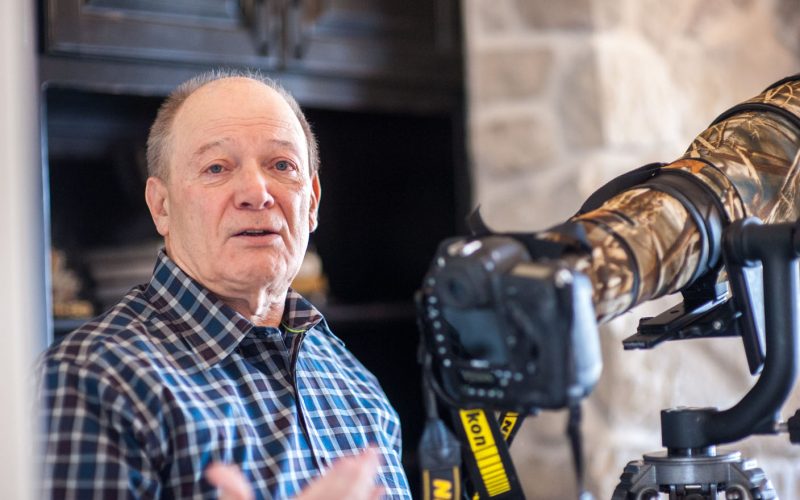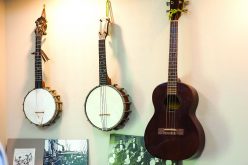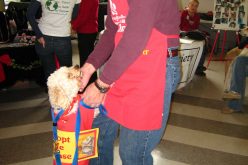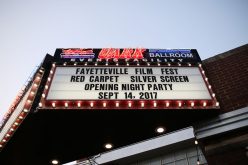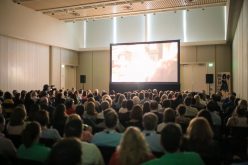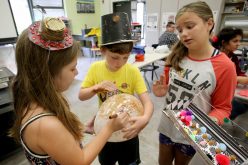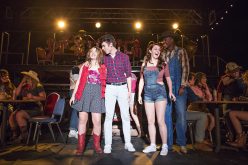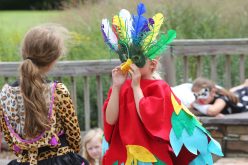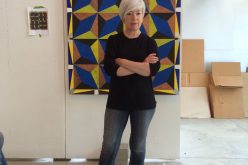Bentonville man’s work graces cover of magazine
LARA JO HIGHTOWER
lhightower@nwadg.com
Bill Petrunich and his wife, Phyllis, of Bentonville have willingly put themselves in the path of Alaskan brown bears and wild African animals — all in the name of art. Bill Petrunich is a nature photographer, a title that has been nearly six decades in the making, but one he now can wear proudly. Nearly 40 of his photographs have been published in 13 issues of the publication Nature Photographer. In fact, his photo graces the cover of the fall and winter, 2017-2018, edition of the magazine.

Photo Courtesy Bill Petrunich
This photo, taken by Bill Petrunich in January 2017, shows the Salt Pan reflection in Death Valley National Park in California.
“I just do it because I love to do it,” said Bill, who focused on his photography skills after he retired from his position as a Walmart executive in 2008. “It’s my art.”
Bill had an affinity for the outdoors early in life. He grew up in California, and his family enjoyed camping in and exploring the national parks in several states. He declared a major in wildlife management when he went to school at Utah State University and spent his time in college working in the outdoors.
“I worked for three years in Sequoia [National Wildlife Refuge] and Kings Canyon National Park [in California], in the back country,” Bill said. “That’s how I paid my way in college, because my parents, they didn’t have a lot of money. So I paid my way by going to work during the summer. The first two years, I was on what was called the soil and moisture crew. The third year, I was on the trail crew — we would go down and clean the back country trails.” The work was grueling and required camping in the wild for long stretches of time, but Bill loved it.
Which made switching majors a difficult decision. In his third year of college, Bill said he had to face the cold, hard reality that wildlife jobs were few and far between. He had noticed, however, that the field of computers was starting to take off, so the practical college junior changed focus to computer science, applied statistics and math.
From that point on, his love of the outdoors and wildlife would have to be a sideline, a hobby. His father had loaned him a camera that Bill had used through college. While serving in the Army in Germany, he purchased the first camera of his own — a Minolta.
“So I had my camera and three lenses that were all fixed lenses at that time,” Bill remembered. “That’s what I had when I got married, and then, when I had my son, I would go out [on photography trips] maybe a few days a year, not much at first.” The photography trips would slowly increase with his amount of vacation time from Phillips Petroleum, where he was hired right out of the Army. “I told Phyllis, ‘I’m going to go out a week a year just for photography.’ She said, ‘Sure, that’s fine,’ because I would still have three or four weeks for a family vacation.”
The world of photography evolved over that period time, and Bill took pains to evolve with it. He switched from prime to zoom lenses when his interest in wildlife photography started taking prominence — today, he counts a 14-pound zoom lens among his favorites. In the early 1980s, he switched from Minolta to Nikon. He took photo classes and workshops when he could and switched from film to digital when he retired.

The Free Weekly/DAVID GOTTSCHALK
Despite it having happened 13 times now, Bill Petrunich said it’s still a thrill for him to see his photos published in yet another edition of Nature Photographer.
“It wasn’t smooth,” he said, laughing. “It was pretty rough at first. I hardly optimized my images at first. Now, I do it all the time. I’m not an expert — as a matter of fact, I consider myself a beginner still.”
Seeking ways to improve his skills led him to the Photographic Society of Northwest Arkansas, where he became a member.
“I have learned a lot from them,” he said. “I’ve taken some sessions from them, and they’re really good.”
With a busy career, Bill didn’t have time to submit his photographs for publication, although he was thrilled when one of his photos was published in a National Geographic calendar. Once retirement hit, however, he decided it was time to try his luck at getting other eyes on his art.
“I remember the first submission I made,” he said. “You have to put the photos on a CD — or, now, a DVD — and when I first submitted them, my technical capabilities were really lacking. I got a note back with the CDs that said, ‘I’m sorry, we can’t read your submission,’ so I said to myself, ‘OK, I’m going to figure this out.’ So, finally, I learned to do it.”
Indeed, Bill did. In addition to the photographs he’s had published, Nature Photographer also has published three articles he’s written about his photography experiences: “Having Fun with Prairie Dogs,” “Brown Bears of Katmai” and “Lines, Shapes, Textures: Death Valley National Park.” Petrunich is clearly taking his retirement seriously. He and Phyllis have taken multiple exotic trips designed to get Bill closer to the wild animals he loves photographing so much. Their one-day field trip to see the brown bears of Alaska, up close and personal, was a highlight. The couple flew in to Katmai National Park with eight other tourists, trekked two miles and were astonished to see a group of the majestic animals gathered around a lake that was, Phyllis said, “pink with salmon.”
“We practically had to sign away our lives,” she said with a laugh. “They fly you in and drop you in to hike, and they have this orientation where they tell you not to move or else the bears will come right at you.”
“We were shooting at the bears from the bluff, it might have been 50 feet below,” Bill remembered. “And then the pilot said, ‘Are you all ready to go on down there?’ I said, ‘You mean down there?’ So we got really excited. But the bears hardly pay any attention to you. They were feeding and fishing for the sockeye salmon.”
Similarly exciting was the Petrunichs’ safari trip to Africa, where they were able to get up close and personal with a wide variety of wild animals that included lions, leopards, elephants and orangutans — a group of whom trapped Phyllis inside her resort room when they came scavenging for the beans inside the small bean bags used to prop up the photographers’ lenses. While out on safari, the Pertrunichs came upon a bloody lion, fresh off a kill. Exhausted, he settled down in a spot of shade yards from their vehicle. The guide warned them to be quiet, but Phyllis managed to talk him into taking a photo of her leaning far out of the jeep, so the lion was in the background. When the shutter clicked, the lion leaped to his feet with a roar.
“[The guide] said, ‘I knew I shouldn’t have done that,’” said Phyllis with a laugh, but said she’s happy she has the photo, all the same.

The Free Weekly/Lara Jo Hightower
Petrunich’s photography work sometimes puts him in the path of dangerous animals — like this brown bear he photographed in Alaska.
That the couple can share the affinity for tracking down wildlife and hiking through the wonders of nature — all in the name of photography — seems fortunate. Their twin granddaughters were born nearly three years ago, and, now, some of the time the Petrunichs used to spend on exotic trips are spent visiting with their son’s family. But the couple still has big travel plans for the future. Phyllis has Israel and Ireland high on her bucket list.
“Another thing we want to do is take a river trip in Europe somewhere,” Bill said. He’s been to all 50 states in the United States and noted he’s gone on trips to national parks where he sleeps in his car in the campground — the better to catch the sweeping vistas as the sun rises.
One thing is sure — Bill will continue submitting his photographs for publication. The thrill of seeing his work featured on the newsstand has yet to grow old.
“You never know when you’re going to be in an issue until you get the magazine,” he said. “I was in Barnes & Noble and was going to look and see if I got my article published. It was sitting in the magazine rack, and I said, ‘Wait a minute.’ I grabbed the magazine, and I sat down on the bench. I said, ‘Holy mackerel, I think that’s my photo [on the cover].’ I quickly checked and said, ‘Yeah, that’s me.’”
__

